
- Picture from ‘Voice in the Garden Blogspot’
Nigel Boldero aka 'Old School Gardener'
-
Join 3,827 other subscribers
Background information
My articles classified..
- 12 tips to save time in the garden (12)
- A musing: odd thoughts (21)
- A Select Vietnamese flora (3)
- A-Z of Garden Trees (23)
- A-Z of Perennials (26)
- Aussie Greens- gardens, parks and open spaces visited in trips to Australia (2)
- Blickling Hall- rebirth of the Walled Garden (88)
- Blogging (13)
- Climate change and gardening (68)
- Community Gardening (114)
- Dear Walter – letters/info from Old School Garden (81)
- Design (394)
- Design My Garden – Tips to improve your plot (12)
- Eat Me: guides to growing and using food plants (5)
- Feature plants (189)
- Floral Roundabouts (4)
- Four Seasons in One Day- series on climate change and gardening (5)
- Gardening and Gardeners: historical snapshots (42)
- Gardening equipment and tools (67)
- Gardening techniques (392)
- Gardening Therapy (3)
- GQT: your gardening queries answered (43)
- Great Gardens (180)
- Great Gardens: Scotland 2016 (6)
- Grow your own food (157)
- Growing Children- series on school gardening (7)
- Haveringland Churchyard (1)
- Health (15)
- Hebridean Hop- a tour of some Scottish isles (4)
- Heritage Gardens & gardening (285)
- Historic landscapes (129)
- John Evelyn's Monthly in the Garden (12)
- Local Food (21)
- Monthly Top ten gardening tips (12)
- Mrs. Murphy's Laws of Gardening (14)
- New Zealand 2019 (19)
- Norfolk in poetry- Jack Kett (13)
- Open Spaces (54)
- Over My Head- looking up at architectural detailing (8)
- Permaculture and sustainability (8)
- Pests and diseases (28)
- PicPosts- great photographs (811)
- Plantax- the stories behind plant names (21)
- Planting Patterns- wow factor pictures (41)
- Play (205)
- Playful Landscapes- examples (9)
- Portuguese Gardens (31)
- Power of 7- tips (24)
- Recycling projects (111)
- School and childrens' Gardening (82)
- Soils and soil improvement (62)
- Style Counsel: snippets on garden styles (13)
- The Essence of Gardening in 12 Objects (12)
- This and that (1,610)
- West Country Gardens (24)
- Wildlife and Nature (419)
-
Recent Posts
- Fighting to Reduce Climate Change Anxiety
- Gardening 101 for Beekeepers
- (no title)
- Home Composting Guide
- Slow down and embrace nature – how to create better cities when the pandemic is over
- Spring Cleanup Checklist for Yard and Garden
- #FungiFriday: a grave situation — Daniel Greenwood
- What did the Nettlefolds do for Christmas? — Winterbourne House and Garden
- Great estates: the changing role of trees in the municipal housing landscape — Municipal Dreams
- Collaborative approaches — The official blog for the North York Moors National Park
- Jekka’s Favourite 12 Herbs for Christmas — Jekka’s – Jekka’s Blogs “All About Herbs”
- A Chance Encounter — PlayGroundology
- Edinburgh’s 1919 Act Housing, Part II: ‘Healthy Houses for the People is the Best Public Health Insurance’ — Municipal Dreams
- The Science of Sustainability — Specifier Review
- Never Gets Old — PlayGroundology
- Say Hello to the 2020 Collections Trainees — Shine A Light
- Council Housing in Preston, Part II: ‘Changing Fashions in Planning’ — Municipal Dreams
- Preston’s Council Housing, Part I to 1939: ‘Compactness, Convenience and Taste’ — Municipal Dreams
- ‘Green Care’ – a positive push from Covid
- Climate projections show extreme UK’s weather will become even more extreme — Official blog of the Met Office news team
- Cottingham’s Council Housing, Part II from 1930: New Forms of Housing Provision — Municipal Dreams
- Decorative Arched Footbridge, Desert Wash, East Ruston, Norfolk — Susan Rushton
- Local Candidates Asked About Well-being of Children — PlayGroundology
- The Role of the Women’s Housing Sub-Committee: ‘Homes fit for Heroines’ — Municipal Dreams
- Taking advantage of good weather: Getting loads of stuff done — Vanha Talo Suomi
- The Susans Cope With Drought — gardeninacity
- What’s up? — NewEnglandGardenAndThread
- Are You Sitting Comfortably – 15 — greenbenchramblings
- Climate Change: The perfect fuel for wildfires? — Official blog of the Met Office news team
- ‘Till we have built Jerusalem in England’s green and pleasant land’: Women’s Influence on State Housing in the Era of World War 1 and After — Municipal Dreams
- Storm Alex, so why not Storm Aiden? — Official blog of the Met Office news team
- October in the Garden: Top 10 Tips
- Green Flag Award- the Judge’s Gardens Competition
- It’s gardener vs. gardener season — GardenRant
- Darwen’s Jubilee Tower — Susan Rushton
- Jekka’s 6 top steps to “Grow On” your herbs — Jekka’s – Jekka’s Blogs “All About Herbs”
- If Summer Could Go On Forever — leaf and twig
- Plant Spotlight: Salvia involucrata ‘Hadspen’ — Winterbourne House and Garden
- The Garden at the begining of Autumn — The Cynical Gardener
- Will Covid-19 change the future of building design? — Specifier Review
- Atlantic tropical storms forming at a record pace — Official blog of the Met Office news team
- The Sussex Weald: where all the mushrooms are — Daniel Greenwood
- Report on nature-based solutions for the climate emergency published — Specifier Review
- My Lockdown Re(dis)covery
- End of the Dog Days — Vanha Talo Suomi
- Transformational public service development plans approved in West Suffolk — Specifier Review
- How changing urban streetscapes reflect post-COVID 19 outdoor cultural trends — Specifier Review
- Council Housing in Greenock, Part II, 1918-1945: their ‘Ain Wee House’ — Municipal Dreams
- #FungiFriday: weeping conk at Ickworth Park — Daniel Greenwood
- Quinta de Ventozelo — Salt of Portugal
Recent Comments
Top Posts & Pages
Favourite Categories Cloud
A-Z of Garden Trees A-Z of Perennials Blickling Hall- rebirth of the Walled Garden Climate change and gardening Community Gardening Dear Walter - letters/info from Old School Garden Design Feature plants Gardening and Gardeners: historical snapshots Gardening equipment and tools Gardening techniques GQT: your gardening queries answered Great Gardens Grow your own food Heritage Gardens & gardening Historic landscapes Open Spaces Pests and diseases PicPosts- great photographs Plantax- the stories behind plant names Planting Patterns- wow factor pictures Play Portuguese Gardens Power of 7- tips Recycling projects School and childrens' Gardening Soils and soil improvement This and that West Country Gardens Wildlife and NatureBlog Stats
- 518,377 hits
Archives
- March 2023 (1)
- January 2022 (1)
- September 2021 (1)
- August 2021 (1)
- April 2021 (1)
- March 2021 (1)
- December 2020 (8)
- November 2020 (5)
- October 2020 (13)
- September 2020 (25)
- August 2020 (4)
- July 2020 (12)
- June 2020 (25)
- May 2020 (12)
- April 2020 (15)
- March 2020 (16)
- February 2020 (13)
- January 2020 (50)
- December 2019 (17)
- November 2019 (6)
- October 2019 (4)
- September 2019 (5)
- August 2019 (6)
- June 2019 (9)
- May 2019 (9)
- April 2019 (3)
- March 2019 (9)
- January 2019 (22)
- December 2018 (16)
- November 2018 (16)
- October 2018 (7)
- September 2018 (17)
- August 2018 (17)
- July 2018 (13)
- June 2018 (9)
- May 2018 (12)
- April 2018 (22)
- March 2018 (21)
- February 2018 (22)
- January 2018 (26)
- December 2017 (30)
- November 2017 (26)
- October 2017 (30)
- September 2017 (32)
- August 2017 (30)
- July 2017 (30)
- June 2017 (32)
- May 2017 (31)
- April 2017 (27)
- March 2017 (29)
- February 2017 (27)
- January 2017 (33)
- December 2016 (30)
- November 2016 (28)
- October 2016 (33)
- September 2016 (32)
- August 2016 (36)
- July 2016 (43)
- June 2016 (29)
- May 2016 (33)
- April 2016 (38)
- March 2016 (40)
- February 2016 (35)
- January 2016 (46)
- December 2015 (43)
- November 2015 (37)
- October 2015 (39)
- September 2015 (39)
- August 2015 (30)
- July 2015 (22)
- June 2015 (33)
- May 2015 (37)
- April 2015 (35)
- March 2015 (40)
- February 2015 (39)
- January 2015 (54)
- December 2014 (54)
- November 2014 (50)
- October 2014 (58)
- September 2014 (35)
- August 2014 (58)
- July 2014 (72)
- June 2014 (58)
- May 2014 (65)
- April 2014 (47)
- March 2014 (59)
- February 2014 (73)
- January 2014 (60)
- December 2013 (51)
- November 2013 (100)
- October 2013 (74)
- September 2013 (63)
- August 2013 (52)
- July 2013 (79)
- June 2013 (83)
- May 2013 (104)
- April 2013 (117)
- March 2013 (173)
- February 2013 (104)
- January 2013 (21)
- December 2012 (2)
Some of my blog followers
Blogs I Follow
- Finding Nature
- Families Connect
- Norfolk Green Care Network
- Discover WordPress
- Susan Rushton
- Daniel Greenwood
- Alphabet Ravine
- MU Library Treasures
- TIME GENTS
- Vanha Talo Suomi
- How I Killed Betty!
- Bits & Tidbits
- Rambling in the Garden
- The Interpretation Game
- pbmGarden
- SISSINGHURST GARDEN
- Deep Green Permaculture
- BloominBootiful
- Winterbourne House and Garden
- greygoosedotco.wordpress.com/
Top clicks from my blog
Calendar of my posts





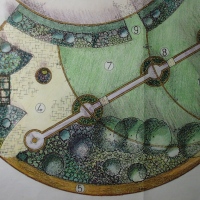
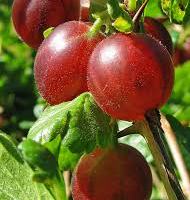
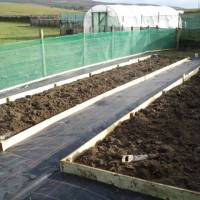
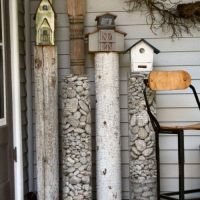
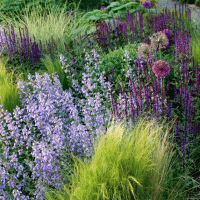
La Davidia involucrata cresce anche nel mio giardino. Ho una pianta di tre anni che cresce velocemente.
——
The Davidia involucrata grows in my garden. I have a three-year plant that grows quickly.
http://ortodeicolori.blogspot.it/2014/05/atmosfere-di-maggio.html
Thanks- how tall is your tree? I’ve heard that they grow quickly after a slow start. Any pictures?
La mia pianta è piccola! L’ho acquistata alta 20cm, ora, dopo 2 anni, è alta circa 1,30 metri. L’unica foto che ho è questa:
—-
My plant is small! I bought 20cm high, now, after 2 years, is about 1.30 meters high.
The only photo I have is this:
Hi Nik
thanks for taking the trouble to send me a pic- it looks like its doing very well, and I love your garden, especially the peonies 🙂
Questa Davidia Involucrata si trova in nord Italia, nel parco “Villa Taranto” a Pallanza sul Lago Maggiore. E’ stata piantata nel 1938. E’ una pianta bellissima.
——
This Davidia involucrata is located in northern Italy, in the park “Villa Taranto” in Pallanza on Lake Maggiore. It ‘was planted in 1938. It’ a beautiful plant.
Wow, just shows that they grow really big if you give them time and space! Thanks for the picture.:)
Reblogged this on Dunston Hall Garden Centre.